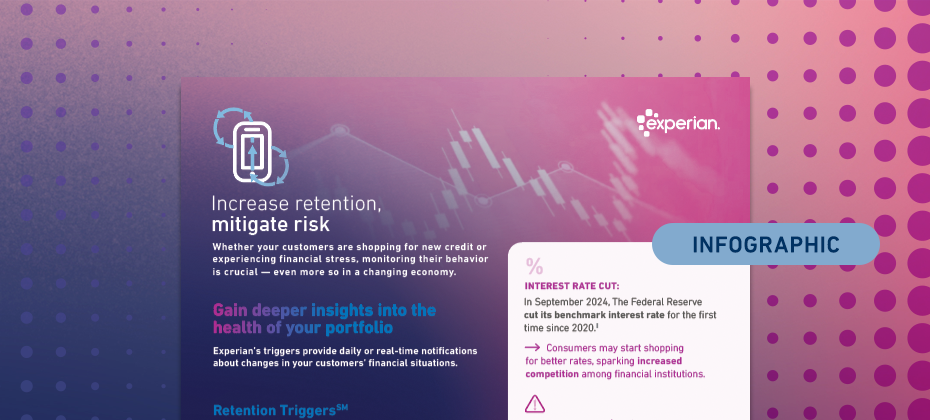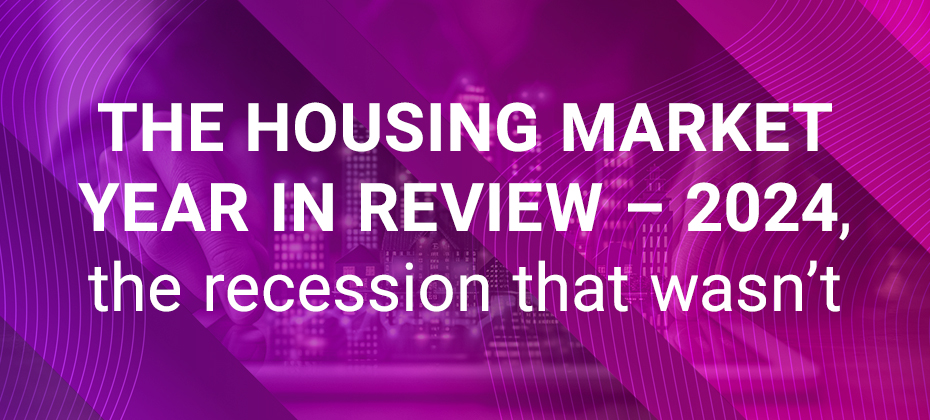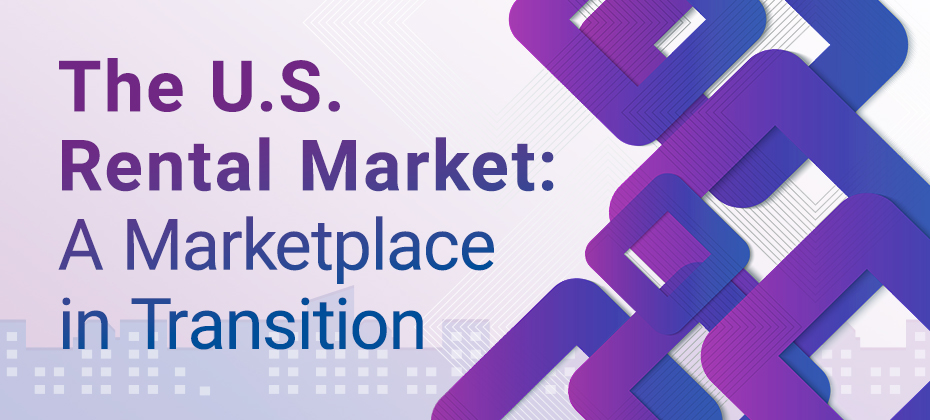Latest Posts

Property managers and landlords nationwide aim to attract reliable, long-term tenants. Gaining insight into modern renters—their tenant data, financial situations, lifestyle choices, and key priorities—gives proactive property owners and managers a competitive edge in appealing to the ideal tenant. While certain elements of the rental landscape are not within the control of market professionals, knowledge is power, and understanding the preferences, spending habits, and profiles of today’s renters can inform their business approach and success. To understand today’s renter, Experian® took a deep dive into the tenant data of the rental market landscape in its 2024 report on the U.S. rental market. Among the principal findings, Generation Z and younger millennials' dominance in this sector is rising. Today’s Renter Profile Experian research reveals movements in the demographics of the average U.S. renter, now dominated by younger individuals and lower average-income consumers. These renters face challenges as they navigate the rising costs of securing housing. The 2024 rental report delves into these changes, highlighting age and income level shifts in tenant data. Critical to property managers and landlords, this information offers an understanding of their customer base and provides insight into the rental market landscape. Gen Z on the Rise: Gen Z alone accounts for 30.5% of all renters, and their numbers are increasing, up 3.5% over a year. Gen Z and younger millennials (adults under 35) represent over 50% of the rental population. Income Declines: From January 2023 to January 2024, the tenant data showed the average income of RentBureau® renters fell from $53,100 to $52,600[1]. Higher Rent Costs: In 2024, over 50% of renters paid $1,500+ per month, with the average U.S. renter's monthly payment of $1,713. Gen Z,the youngest renter population, spends an average of $1,600 monthly on rent. This context plays an important role in examining the state of the 2024 rental market. Propensity to Move In addition to age and economic well-being, landlords should take a keen interest in tenant data related to renters’ moving habits, as these provide valuable insights into behavior and market trends. Landlords generally prefer longer-term leaseholders, and renters who stay longer provide more stability to property management efforts. Not surprisingly, generational trends appear here as well. While over 90% of all renters retained one lease over a 2-year period, tenant data indicates that Gen Z and younger millennial renters tend to move more than other age groups. This tendency stems from various factors, including a willingness to relocate to more affordable regions or areas that better suit their lifestyle preferences. With today’s evolving work environment, remote work has opened new possibilities. Again, the overarching trend is that renters stay in one place for two years. In fact, this represents 92.5% of all renters. Signs of Overall Renter Financial Health Housing is a significant monthly cost of living expense, especially for many younger adults just starting out and lower-income individuals and families. The percentage of a renter’s monthly income allocated to rental costs clearly indicates housing affordability. This tenant data reflects that higher rent-to-income ratios (RTIs) signify that renters have less financial flexibility, as a larger portion of their monthly income is allocated to rent, leaving less available for essentials, savings, and discretionary spending. On average, renters spend over 44% of their monthly income on rent, and low-to-moderate-income renters dedicate over 50% to rent. General guidelines suggest that the percentage should be no more than 30%. Higher rental costs and declining annual incomes disproportionately impact those with fewer financial means. Credit and Other Signs Landlords and property managers value tenant data, such as renter applicants' stability. Indicators such as overall credit quality and negative payment history provide valuable insights into economic well-being. While negative payment history has improved slightly, the market shows a rise in delinquencies. Experian’s research highlights that while credit scores for the general U.S. population are on the rise, the trends for renters tell a slightly different story. Between May 2023 and May 2024, tenant data revealed a 2% increase in renters fell into the near-prime and subprime credit categories. Although the implications for the future remain uncertain, this data, combined with other analytics, may offer clues about market trends and opportunities. The Future The demand for rentals remains high, particularly among young adults and lower-income households. As the economy and market forces fluctuate, so do the financial pressures on renters and rental housing availability and costs. The role of young adults and lower-income households in the rental market will continue. Landlords and property managers must tune in to demographic realities in their efforts to develop risk management and success strategies. To learn more about the state of the U.S. rental market, download Experian’s 2024 rental report. [1] RentBureau income is based on modeled income, which is estimated using credit data and other predictive factors.

Four capabilities to consider for improved coverage and customer experience. Identity verification during account opening is the foundation for building trust between consumers and businesses. Consumers expect a seamless and convenient experience, and with the ease and optionality of online banking, are willing to look for alternatives that offer less friction. According to Experian research, 92% of consumers feel it's important for the businesses they deal with online to identify or recognize them on a repeated basis accurately, but only 16% have high confidence that this is happening. The disconnect between consumers’ expectations for online identity verification and the digital experiences they encounter is leading to reduced satisfaction and increased abandonment during new account opening processes. According to recent research by Experian, 38% of consumers surveyed considered ending a new account opening mid-way through the process due to poor experience. In addition, the same research found that nearly one-fifth of consumers had moved their business elsewhere because of this. Amidst the quest for convenience lies a pressing concern: ensuring the integrity of accounts being opened and protecting against fraud. Businesses continue to experience increasing fraud losses, Juniper Research forecasts that merchant losses from online payment fraud will exceed $362 billion globally between 2023 and 2028, with losses of $91 billion alone in 2028. Identity verification serves as the first line of defense in protecting both financial institutions and consumers. By verifying the identities of individuals before granting them access to services, businesses can mitigate the risk of identity theft, account takeover, and other forms of fraud. Four capabilities to consider when building out an identity verification strategy Personally Identifiable Information (PII) dataComparing consumer input data to a comprehensive data set helps effectively validate the consumer without disrupting customer experience. Details like name, address, date of birth, and social security number provide valuable identity information to verify identities quickly and accurately. Identity graphUsing an identity graph leveraging advanced analytics and data linking techniques helps prevent synthetic IDs from getting through. By mapping relationships between identity attributes, you can easily identify patterns and connections within the data and detect anomalies or inaccuracies in the information provided. Alternative data“Thin file” consumers are often rejected due to a lack of traditional data. Using alternative data like phone ownership and email data helps not only verify that the identity is real but also improves coverage, so you are not rejecting good customers. Document verificationHaving a document verification provider that seamlessly integrates into your identity verification workflow is essential for robust identity verification. Validating good users early in the account opening process helps keep fraudsters out so good users are not subject to stringent identity checks later on during onboarding. Next steps A strong identity verification process builds trust by demonstrating a commitment to protecting and safeguarding consumer data. A proper identity verification workflow would minimize the impact of friction for consumers and help organizations manage fraud and regulatory compliance by examining specific business needs on a case-by-case basis. Identifying the right mix of capabilities through analytics and feedback while utilizing the best data reduces the cost of manual verification and helps onboard good customers faster. Learn more Research conducted in March 2024 by Experian in North America

As we step into 2025, the convergence of credit and fraud risk has become more pronounced than ever. With fraudsters leveraging emerging technologies and adapting rapidly to new defenses, risk managers need to adopt forward-thinking strategies to protect their organizations and customers. Here are the top fraud trends and actionable resolutions to help you stay ahead of the curve this year. 1. Combat synthetic identity fraud with advanced AI models The trend: Synthetic identity fraud is surging, fueled by data breaches and advanced AI tooling. Fraudsters are combining genuine credentials with fabricated details, creating identities that evade traditional detection methods. Resolution: Invest in sophisticated identity validation tools that leverage advanced AI models. These tools can differentiate between legitimate and fraudulent identities, ensuring faster and more accurate creditworthiness assessments. Focus on integrating these solutions seamlessly into your customer onboarding process to enhance both security and user experience. 2. Strengthen authentication against deepfakes The trend: Deepfake technology is putting immense pressure on existing authentication systems, particularly in high-value transactions and account takeovers. Resolution: Adopt a multilayered authentication strategy that combines voice and facial biometrics with ongoing transaction monitoring. Dynamic authentication methods that evolve based on user behavior and fraud patterns can effectively counter these advanced threats. Invest in solutions that ensure digital interactions remain secure without compromising convenience. 3. Enhance detection of payment scams and APP fraud The trend: Authorized Push Payment (APP) fraud and scams are increasingly difficult to detect because they exploit legitimate customer behaviors. Resolution: Collaborate with industry peers and explore centralized consortia to share insights and develop robust detection strategies. Focus on monitoring both inbound and outbound transactions to identify anomalies, particularly payments to mule accounts. 4. Optimize Your Fraud Stack for Efficiency and Effectiveness The trend: Outdated device and network solutions are no match for GenAI-enhanced fraud tactics. Resolution: Deploy a layered fraud stack with persistent device ID technology, behavioral analytics, and GenAI-driven anomaly detection. Begin with frictionless first-tier tools to filter out low-hanging fraud vectors, reserving more advanced and costly tools for sophisticated threats. Regularly review and refine your stack to ensure it adapts to evolving fraud patterns. 5. Build collaborative relationships with fraud solution vendors The trend: Vendors offer unparalleled industry insights and long-tail data to help organizations prepare for emerging fraud trends. Resolution: Engage in reciprocal knowledge-sharing with your vendors. Leverage advisory boards and industry insights to stay informed about the latest attack vectors. Choose vendors who provide transparency and are invested in your fraud mitigation goals, turning product relationships into strategic partnerships. Turning resolutions into reality Fraudsters are becoming more ingenious, leveraging GenAI and other technologies to exploit vulnerabilities. To stay ahead of fraud in 2025, let us make fraud prevention not just a resolution but a commitment to safeguarding trust and security in a rapidly evolving landscape. Learn more

Pickup trucks are a staple of the automotive industry. Their utility and versatility allow consumers to haul heavy loads or tow large trailers, making them ideal for blue-collar workers. At the same time, pickup trucks offer a sleek appearance that can be aesthetically appealing. And now, we’re seeing the next evolution of the pickup truck: EVs. According to Experian’s Automotive Consumer Trends Report: Q3 2024, of the 292.1 million vehicles in operation, more than 54 million were pickup trucks. Furthermore, 17.4% of new retail registrations this quarter were pickup trucks, while pickup trucks made up 19.2% of used retail registrations. Interestingly, we’re seeing more consumer demand for EV pickup trucks. Over the last 12 months, the Ford F-150 Lightening made up 42.2% of the EV pickup truck market share, closely followed by the Tesla Cybertruck at 37.9%. Rounding out the top five were the Rivian R1T (14.2%), GMC Hummer EV (4.8%) and Chevrolet Silverado EV (0.9%). Still room for the ICE pickup Although we’re beginning to see EV pickup trucks gain some prominence, the overwhelming majority of pickups on the road are gas-powered. In fact, over the last 12 months, 14.5% of new retail pickup truck registrations were attributed to the Chevrolet Silverado 1500, followed by the Ford-150 at 13.4% and the GMC Sierra 1500 (9.1%). Though, data found the preference flipped for the used side, with the Ford F-150 leading at 18.1% of retail pickup registrations and the Chevrolet Silverado 1500 at 13.9%, followed by the GMC Sierra 1500 (6.2%). With more consumers not only maintaining a keen interest in gasoline pickup trucks, but also moving into the EV space, the current data can be leveraged in more ways than one as professionals diversify their sales strategies while optimizing dealership inventory. To learn more about pickup truck insights, view the full Automotive Consumer Trends Report: Q3 2024 presentation or The Trade Desk Brochure.

Whether consumers are shopping for new credit or experiencing financial stress, monitoring their behavior is crucial — even more so in an ever-changing economy. Our latest infographic explores economic trends impacting consumers’ financial behaviors and how Experian’s Risk and Retention TriggersSM enable lenders to detect early signs of risk or churn. Key highlights include: Credit card balances climbed to $1.17 trillion in Q3 2024. As prices of goods and services remain elevated, consumers may continue to experience financial stress, potentially leading to higher delinquency rates. Increasing customer retention rates by 5% can boost profits by 25% to 95%. View the infographic to learn how Risk and Retention Triggers can help you advance your portfolio management strategy. Access infographic

In 2024, the housing market defied recession fears, with mortgage and home equity growth driven by briefly lower interest rates, strong equity positions, generally positive economic indicators, and stock market appreciation. This performance is notable because, in 2023, economists’ favorite hobby was predicting a recession in 2024. Following a period of elevated inflation, driven largely by loose monetary policy, expansionary fiscal policy, and supply chain disruptions brought on by COVID, economists were certain that the US economy would shrink. However, the economy continued outperforming expectations, even as unemployment rose modestly (Figure 2) and inflation cooled (Figure 3). Source: FRED (Figure 1, Figure 2, Figure 3). So, a good economy is good for the mortgage and home equity markets, right? Generally speaking, this statement was true. As monitored by Experian’s credit database, mortgage originations increased by approximately thirty percent year over year as of November 2024 (Figure 4), and Q3 ’24 pre-tax profit for Independent Mortgage Banks (IMBs) averaged $701 per loan.1 So, business in home lending is good — certainly better than it was during the period when the Fed was raising rates, origination volumes shrank as opposed to grew, and IMB profit per loan turned negative. Source: Experian Ascend Insights Dashboard. What constituted this growth in mortgage lending? As we all know, the Fed has lowered interest rates by 100bps since they started reducing rates in September. The market had priced in the September cut weeks prior to the actual announcement (Figure 5), and the market enjoyed a spike in refinance volume as a result (Figure 6). However, in the lead-up to and following the US presidential election, interest rates spiked back up due to the market’s expectations around future economic activity, which will dampen pressure on refinance volumes even after the recent additional rate drop. The impact of further rate drops on mortgage rates is unclear, and refinance volume still constitutes only around three percent of overall origination volume. Source: Figure 5, Figure 6 (Experian Ascend Insights Dashboard). The shift to a purchase-driven housing market What does this all mean? Our view is that pockets of refinance volume (rate and term, VA, FHA, cashout) are available to those lenders with a sophisticated targeting strategy. However, the data also very clearly indicates that this market is still very much a purchase market in terms of opportunity for originations growth. This position should not surprise long-time mortgage lenders, given that purchase volume has always constituted a significant majority of origination volume. However, this market is a different purchase market than lenders may be used to. This purchase market is different because of unprecedented statistics about the housing market itself. The average age of a first-time homebuyer recently reached a record high of 38. The average age of overall homebuyers in November of this year similarly jumped to a new record high of 56, with homes being “wildly unaffordable for young people.” Twenty-six percent of home purchases are all-cash, another record high, and homeowners have an aggregate net equity position of $17.6 trillion, fueling those all-cash purchases. The market is expensive both from an interest rate perspective and a housing price-level perspective, and those trends are driving who is buying homes and how they are buying them.2 Opportunities for lenders in 2025 What do these housing market dynamics mean for lenders? To begin with, lenders should not spend money marketing mortgages to consumers in their 50s and 60s with large equity positions. These consumers are likely to be in the 26 percent all-cash buyer cohort, and that money will be wasted since mortgages are no longer so cheap that even cash-rich buyers would take them. Further, this equity-rich generation has children, and nearly 40% of those children borrow from the bank of mom and dad to purchase their first home. Since roughly a quarter (albeit a shrinking quarter) of homebuyers are first-time homebuyers, and since 40% of those rely on help from parents to facilitate that purchase, it may make sense for lenders to identify those consumers with 1) children and 2) significant equity positions and to offer products like cash-out refinances or home equity loans/lines to help facilitate those first-time purchases. Data is critical to executing these kinds of novel marketing strategies. It is one thing to develop these marketing and growth strategies in principle and another entirely to efficiently find the consumers that meet the criteria and give them a compelling offer. Consider home equity originations. As Figure 7 illustrates, HELOC originations are strong but have completely stalled from a growth rate perspective. As Figure 8 illustrates, this is despite the market's continued growth in direct mail marketing investment. Although HELOC origination volumes are a fraction of mortgage—around $27b per month for HELOC versus $182b per month for mortgage—there are significantly more home equity direct mail offers being sent per month (39 million) for home equity products as there are for mortgage (31 million) as of October ’24.3 This all means that although many lenders have wised up to the home equity opportunity to the point of saturating the market with offers, few have successfully leveraged targeting data and analytics to craft sufficiently compelling offers to those consumers to convert those marketing leads into booked loans. Source: Figure 7 (Experian Ascend Insights Dashboard), Figure 8 (Mintel). Adapting to a resilient housing market In summary, the housing market, comprised of mortgage and home equity products, has experienced persistent growth over the past year. Many who are reading this note will have benefitted from that growth. However, as we have identified, in many respects housing market growth has 1) been concentrated to some key borrower demographics and 2) many lenders are investing in marketing campaigns that are not efficiently reaching or convincing that key housing demographic to book loans, whether it be a home equity or mortgage product. As such, as we move into 2025, Experian advises our clients to focus on the following three themes to ensure they benefit from this trend of growth into the new year: Ensure you effectively differentiate your marketing targeting, collateral, and offers for the various demographics in the market. Ensure your origination experiences for mortgage and home equity products are modern and efficient. Lenders who force all borrowers through a painful, manual legacy process will waste marketing dollars and experience pipeline fallout. Although the market is growing, other lenders are coming for your current customers. They could be coming for purchase activity, refinance opportunities, or they may be using home equity products to encroach on your existing mortgage relationship. As such, capitalizing on growth in 2025 is not merely about gaining new customers; it is also about retaining your existing book of business using high-quality data and analytics. Learn more 1 Although December numbers are available for year-over-year comparison, we excluded them due to the holiday period's strong seasonality patterns. 2 The Case-Shiller index recently topped out at record levels. 3 Mintel/Comperemedia data.

Transformations in today’s U.S. rental market reflect changing economic and market forces. These dynamic times present challenges and opportunities for property managers and landlords seeking more stability and consistency in their property occupancies. The real estate industry responded positively to the Federal Reserve's recent announcement to cut interest rates by a quarter percentage point, marking a favorable shift from previous actions that kept rates steady. However, uncertainty lingers about the extent and pace of changes in the residential real estate market, including the rental and buying sectors. Experts remain optimistic, predicting improvements as the market heads into next year's busy season. Landlords and property managers looking to attract more stable renters need to understand macro- and micro-market trends, renter demographics and preferences, and other information impacting their specific locales. Experian Housing published its 2024 report on the U.S. rental market, which provides data-driven insights into the current rental landscape. Experts examined today’s renter population, current market trends, the state of housing development, and the market’s future. Who is today’s renter? Today’s renter is still navigating financial constraints and potential marketplace affordability challenges. While location-specific information does influence the affordability of renting versus buying a home, on average, affordability remains an important factor guiding consumer decision-making. Our latest rental report highlights a notable shift in the rental market, with a growing number of younger renters and a decline in the average annual income among renters. According to Experian’s RentBureau®1, over 30% of renters are Generation Z—the youngest adult demographic. Expanding this to include individuals under 34 years old, younger renters now represent over half of all renters in the United States. Experian’s research highlights a shift in rental spending trends, showing the average income for renters now at $52,600. RentBureau data underscores the evolving financial landscape, with rent-to-income (RTI) ratios reflecting a growing commitment to housing. On average, individuals allocate 44.1% of their income to rent, while low-to-moderate-income households dedicate 52.5%. These figures exceed the traditional guideline of keeping rent within 30% of gross monthly income, underscoring the significant economic pressures faced by renters, particularly those with low-to-moderate incomes, as they navigate rising housing costs and limited affordability in the current market. This reality highlights the urgent need for broader systemic solutions to address housing availability and affordability challenges. What is happening in the rental market? Rental market trends reflect several factors, including changes in renter demographics, interest rates, housing supply and demand, and the economy. Overall, vacancy rates have stayed relatively low, which has resulted in rising rent prices, although there are signs of flattening. With fewer housing options available, many renters stay put for longer, which also contributes to availability and affordability. More renters, over 50% of all renters (a 10% increase over May 2023), are paying $1,500 or more in monthly rent, and the nationwide average rent stands at $1,713. A regional look offers greater specific insights for landlords and property managers, which is critical for truly understanding the marketplace. In 2024, 43 of 50 states have RTI ratios above the suggested guideline of 30%. California has the highest median RTI at just over 46%, followed by Massachusetts, Florida, Washington, and New Jersey. Other states facing increasing RTI ratios include Georgia, North Carolina, Colorado, Texas, and Nevada. These high ratios negatively affect affordability. At the same time, Experian Housing research indicates that over 92% of renters hold a single lease over two years. Data also shows 6.7% of renters with two leases in 24 months and others moving three or more times in this timeframe. Older generations, surprisingly, are moving more now than in recent years. Where is development headed? High mortgage rates are constraining housing development, especially for affordable entry-level homes. Roughly 50% fewer starter homes are being built, and multifamily new construction also faces constraints. With that said, multi-family housing units already under construction are coming to market. These units are generally high-end, contributing to increased rental prices. The supply coming to the market is higher-priced due to greater construction costs across the board. Contributors to the rising costs include builds in pricier metropolitan areas as well as features and modern amenities sought after by younger renters. The U.S. Census Bureau reports a slight uptick in new home construction since July 2023. How is the future looking? The U.S. economy is expected to remain stable, which should benefit renters and landlords alike. The outlook for the rental market in 2024 and 2025 remains optimistic with inflation down and the Fed rate cut, but many other factors come into play, specifically, overall economic health and the state of the employment market. For renters, the best tact is to set goals to improve their overall credit profiles and opportunities in the housing market. Individuals benefit from rent reporting. Experian RentBureau helps renters build credit profiles and open the best opportunities for the rental market and moving to the first-time homebuyer market. With rental housing still in high demand, property managers and landlords should focus on tenant screening, rent reporting, and fraud prevention as part of their risk management strategies. Focusing on these areas will increase the chances of finding quality, longer-term tenants. To learn more about the state of the U.S. rental market, download Experian Housing’s 2024 rental report. Access report 1 RentBureau® is the largest rental payment database that contains more than 36 million renter profiles. While RentBureau doesn’t represent the total U.S. rental market population, internal studies reveal RentBureau data aligns closely to historical U.S. Census data studies, which provides confidence in the deeper understandings aggregated in the report.

In today’s digital landscape, where data breaches and cyberattacks are rampant, businesses face increasing security challenges. One of the most prevalent threats is credential stuffing—a cyberattack in which malicious actors use stolen username and password combinations to gain unauthorized access to user accounts. As more personal and financial data gets leaked or sold on the dark web, these attacks become more sophisticated, and the consequences for businesses and consumers alike can be devastating.But there are ways to proactively fight credential stuffing attacks and protect your organization and customers. Solutions like our identity protection services and behavioral analytics capabilities powered by NeuroID, a part of Experian, are helping businesses prevent fraud and ensure a safer user experience. What is credential stuffing? Credential stuffing is based on the simple premise that many people reuse the same login credentials across multiple sites and platforms. Once cybercriminals can access a data breach, they can try these stolen usernames and passwords across many other sites, hoping that users have reused the same credentials elsewhere. This form of attack is highly automated, leveraging botnets to test vast numbers of combinations in a short amount of time. If an attacker succeeds, they can steal sensitive information, access financial accounts, or carry out fraudulent activities. While these attacks are not new, they have become more effective with the proliferation of stolen data from breaches and the increased use of automated tools. Traditional security methods—such as requiring complex passwords or multi-factor authentication (MFA)—are useful but not enough to prevent credential stuffing fully. How we can help protect against credential stuffing We offer comprehensive fraud prevention tools and multi-factor authentication solutions to help you identify and mitigate credential stuffing threats. We use advanced identity verification and fraud detection technology to help businesses assess and authenticate user identities in real-time. Our platform integrates with existing authentication and risk management solutions to provide layered protection against credential stuffing, phishing attacks, and other forms of identity-based fraud. Another key element in our offering is behavioral analytics, which goes beyond traditional methods of fraud detection by focusing on users' data entry patterns and interactions. NeuroID and Experian partner to combat credential stuffing We recently acquired NeuroID, a company specializing in behavioral analytics for fraud detection, to take the Experian digital identity and fraud platform to the next level. Advanced behavioral analytics is a game-changer for preventing credential-stuffing attacks. While biometrics track characteristics, behavioral analytics track distinct actions. For example, with behavioral analytics, every time a person inputs information, clicks in a box, edits a field, and even hovers over something before clicking on it or adding the information to it, those actions are tracked. However, unlike biometrics, this data isn’t used to connect to a single identity. Instead, it’s information businesses can use to learn more about the experience and the intentions of someone on the site. NeuroID and Experian’s paired fraud detection capabilities offer several distinct advantages in preventing credential stuffing attacks: Real-time threat detection: Analyze thousands of behavioral signals in real-time to detect user behavior that suggests bots, fraud rings, credential stuffing attempts, or any number of other cybercriminal attack strategies. Fraud risk scoring: Based on behavioral patterns, assign a fraud risk score to each user session. High-risk sessions can trigger additional authentication steps, such as CAPTCHA or step-up authentication, helping to stop credential stuffing before it occurs. Invisible to the user: Unlike traditional authentication methods, behavioral analytics work seamlessly in the background. Users do not need to take extra steps—such as answering additional security questions or entering one-time passwords. Adaptive and self-learning: As users interact with your website or app, our system continuously adapts to their unique behavior patterns. Over time, the system becomes even more effective at distinguishing between legitimate and malicious users without collecting any personally identifiable information (PII). Why behavioral data is critical in combating credential stuffing Credential stuffing attacks rely on the ability to mimic legitimate login attempts using stolen credentials. Behavioral analytics, however, can spot the subtle differences between human and bot behavior, even if the attacker has the correct credentials. By integrating behavioral analytics, you can: Prevent automated attacks: Bots often interact with websites in unnatural ways—speeding through form fields, using erratic mouse movements, or attempting logins from unusual or spoofed geographic locations. Behavioral analytics can flag these behaviors before an account is compromised. Detect account takeovers early: If a legitimate user’s account is taken over, behavioral analytics can detect the change in interactions. By monitoring behavior, businesses can detect account takeover attempts much earlier than traditional methods. Lower false positive rates: Traditional fraud prevention tools often rely on rigid rule-based systems that can block legitimate users, especially if their login patterns slightly differ from the norm. On the other hand, behavioral analytics analyzes a user's real-time behavioral data without relying on traditional static data such as passwords or personal information. This minimizes unnecessary flags on legitimate customers (while still detecting suspicious activity). Improve customer experience: Since behavioral analytics is invisible to users and requires no extra friction (like answering security questions), the login and transaction verification process is much smoother. Customers are not inconvenienced, and businesses can reduce the risk of fraud without annoying their users. The future of credential stuffing prevention Credential stuffing is a growing threat in today’s interconnected world, but with the right solutions, businesses can significantly reduce the risk of these attacks. By integrating our fraud prevention technologies and behavioral analytics capabilities, you can stay ahead of the curve in securing user identities and preventing unauthorized access. The key benefits of combining traditional identity verification methods with behavioral analytics are higher detection rates, reduced friction for legitimate users, and an enhanced user experience overall. In an era of increasingly sophisticated cybercrime, using data-driven behavioral insights to detect user riskiness is no longer just a luxury—it’s a necessity. Learn more Watch webinar

The credit card market is rapidly evolving, driven by technological advancements, economic volatility, and changing consumer behaviors. Our new 2025 State of Credit Card Report provides an in-depth analysis of the credit card landscape and strategy considerations for financial institutions. Findings include: Credit card debt reached an all-time high of $1.17 trillion in Q3 2024. About 19 million U.S. households were considered underbanked in 2023. Bot-led fraud attacks doubled from January to June 2024. Read the full report for critical insights and strategies to navigate a shifting market. Access report

Bots have been a consistent thorn in fraud teams’ side for years. But since the advent of generative AI (genAI), what used to be just one more fraud type has become a fraud tsunami. This surge in fraud bot attacks has brought with it: A 108% year-over-year increase in credential stuffing to take over accounts1 A 134% year-over-year increase in carding attacks, where stolen cards are tested1 New account opening fraud at more than 25% of businesses in the first quarter of 2024 While fraud professionals rush to fight back the onslaught, they’re also reckoning with the ever-evolving threat of genAI. A large factor in fraud bots’ new scalability and strength, genAI was the #1 stress point identified by fraud teams in 2024, and 70% expect it to be a challenge moving forward, according to Experian’s U.S. Identity and Fraud Report. This fear is well-founded. Fraudsters are wasting no time incorporating genAI into their attack arsenal. GenAI has created a new generation of fraud bot tools that make bot development more accessible and sophisticated. These bots reverse-engineer fraud stacks, testing the limits of their targets’ defenses to find triggers for step-ups and checks, then adapt to avoid setting them off. How do bot detection solutions fare against this next generation of bots? The evolution of fraud bots The earliest fraud bots, which first appeared in the 1990s2 , were simple scripts with limited capabilities. Fraudsters soon began using these scripts to execute basic tasks on their behalf — mainly form spam and light data scraping. Fraud teams responded, implementing bot detection solutions that continued to evolve as the threats became more sophisticated. The evolution of fraud bots was steady — and mostly balanced against fraud-fighting tools — until genAI supercharged it. Today, fraudsters are leveraging genAI’s core ability (analyzing datasets and identifying patterns, then using those patterns to generate solutions) to create bots capable of large-scale attacks with unprecedented sophistication. These genAI-powered fraud bots can analyze onboarding flows to identify step-up triggers, automate attacks at high-volume times, and even conduct “behavior hijacking,” where bots record and replicate the behaviors of real users. How next-generation fraud bots beat fraud stacks For years, a tried-and-true tool for fraud bot detection was to look for the non-human giveaways: lightning-fast transition speeds, eerily consistent keystrokes, nonexistent mouse movements, and/or repeated device and network data were all tell-tale signs of a bot. Fraud teams could base their bot detection strategies off of these behavioral red flags. Stopping today’s next-generation fraud bots isn’t quite as straightforward. Because they were specifically built to mimic human behavior and cycle through device IDs and IP addresses, today’s bots often appear to be normal, human applicants and circumvent many of the barriers that blocked their predecessors. The data the bots are providing is better, too3, fraudsters are using genAI to streamline and scale the creation of synthetic identities.4 By equipping their human-like bots with a bank of high-quality synthetic identities, fraudsters have their most potent, advanced attack avenue to date. Skirting traditional bot detection with their human-like capabilities, next-generation fraud bots can bombard their targets with massive, often undetected, attacks. In one attack analyzed by NeuroID, a part of Experian, fraud bots made up 31% of a business's onboarding volume on a single day. That’s nearly one-third of the business’s volume comprised of bots attempting to commit fraud. If the business hadn’t had the right tools in place to separate these bots from genuine users, they wouldn’t have been able to stop the attack until it was too late. Beating fraud bots with behavioral analytics: The next-generation approach Next-generation fraud bots pose a unique threat to digital businesses: their data appears legitimate, and they look like a human when they’re interacting with a form. So how do fraud teams differentiate fraud bots from an actual human user? NeuroID’s product development teams discovered key nuances that separate next-generation bots from humans, and we’ve updated our industry-leading bot detection capabilities to account for them. A big one is mousing patterns: random, erratic cursor movements are part of what makes next-generation bots so eerily human-like, but their movements are still noticeably smoother than a real human’s. Other bot detection solutions (including our V1 signal) wouldn’t flag these advanced cursor movements as bot behavior, but our new signal is designed to identify even the most granular giveaways of a next-generation fraud bot. Fraud bots will continue to evolve. But so will we. For example, behavioral analytics can identify repeated actions — down to the pixel a cursor lands on — during a bot attack and block out users exhibiting those behaviors. Our behavior was built specifically to combat next-gen challenges with scalable, real-time solutions. This proactive protection against advanced bot behaviors is crucial to preventing larger attacks. For more on fraud bots’ evolution, download our Emerging Trends in Fraud: Understanding and Combating Next-Gen Bots report. Learn more Sources 1 HUMAN Enterprise Bot Fraud Benchmark Report 2 Abusix 3 NeuroID 4 Biometric Update

Scott Brown presents at Reuters Next “If I were to look into a crystal ball, traditional lending methodology and processes will not be replaced; they will be augmented by consumers connecting to banks via APIs, contributing the data they are comfortable with, and banks using that in conjunction with historical credit data to offer newer and better products they didn’t have access to before. The convergence of data, tech and AI leads to more financial inclusion and a more modern way of underwriting.”Scott Brown, Group President Financial Services, Experian North America Scott Brown, Group President of Financial Services for Experian North America, recently presented at Reuters Next discussing the transformative power of AI and data analytics in financial services. The session also covered the top challenges that financial institutions face today and how advances in technology are helping organizations overcome those challenges. This keynote presentation was a timely follow-up to Brown’s previous appearance at the Money20/20 conference in Las Vegas, where he revealed the details of Experian’s latest innovation in GenAI technology, Experian Assistant. Brown, in a conversation with TV writer, producer and anchor Del Irani, spoke about the ethical considerations of AI innovation, what the future of underwriting may look like, and how open banking can drive financial inclusion and have a significant positive impact on both businesses and consumers. “If you are extending a line of credit to a given consumer, how do you do so in a way that’s integrated into their everyday lives? That’s where the concept of embedded finance comes in, and how to embed finance into a consumer’s life, and not the other way around.”Scott Brown, Group President Financial Services, Experian North America By embedding finance into consumers’ lives, and not the other way around, organizations can develop better strategies to balance risk and generate more revenue. He also focused on three foundational steps to take advantage of the capabilities AI offers: data quality, transparency, and responsibility. Areas of focus for implementing AI As organizations rely on more sophisticated approaches, data quality inputs are more important than ever. Inaccurate data can lead to poor business decisions that can have a negative impact on organizations’ bottom line. Transparency is also a crucial component of implementing AI solutions. Companies should be able to explain how their models work and why the end results make sense while avoiding biases. Leveraging data with AI tools allows organizations to get a better view of the consumer, which is a goal of most banks and lending institutions. Using that consumer data responsibly is important for financial institutions to establish and maintain trust with the people who use their services. While incorporating AI solutions into everyday business operations is important for financial institutions to better serve their consumers and remain competitive in the industry, a lack of access to AI tools can prevent some organizations from doing so. A fragmented approach leads to higher costs, lower efficiency, and greater risk Until recently, financial institutions have had to rely on several different technology providers and tools to optimize customer experience and operational efficiency while protecting consumers from the risk of identity theft and fraud. This fragmented approach can result in increased costs for organizations and higher risk for consumers. Now, AI technology is solving this issue by integrating functionality into a single platform, such as the Experian Ascend Technology Platform™. This streamlined access to a comprehensive suite of tools can help accelerate time-to-value while also eliminating compliance risks. Full interview available now Brown’s full interview at Reuters Next reveals more details about how Experian is empowering organizations to better serve their consumers’ financial needs through AI innovation while also helping more than 100 million Americans who don’t have access to the mainstream credit ecosystem due to being credit invisible, unscoreable, or have a low credit score. Watch the full interview to learn more about how Experian is continuing to bring financial power to all through innovative technology. Watch the full interview now

Today’s fast-paced, digital-first hiring environment calls for a more comprehensive approach to pre-employment screening. With growing pressure on employers and HR teams to make swift, accurate, and secure hiring decisions, having access to the tools and data to enhance efficiency and security is more important than ever. By evolving beyond traditional screening methods, background screeners can better meet these needs and deliver added value to their clients. Fraud remains a significant challenge. In fact, fraud scams resulted in a staggering $485.6 billion in losses in 20231 — and hiring teams aren’t exempt from these risks. Fraudulent resumes, synthetic identities, and the risk of non-compliance with evolving regulations create a challenging landscape for pre-employment verifications. What if there was a way to make smarter, faster, and more secure hiring decisions? This article explores how background screeners can optimize pre-employment verification processes, reduce fraud risks, and ensure compliance — all while delivering a positive candidate experience. What is pre-employment screening? Employers conduct pre-employment screenings to thoroughly evaluate job candidates and make informed hiring decisions. It’s designed to verify key details about candidates, such as their identity, employment history, and references among others to assess their suitability for a role and ensure compliance with industry regulations. Enhancing traditional screening processes For decades, pre-employment background checks have been a cornerstone of the hiring process. While effective, many traditional methods face challenges in keeping up with the evolving demands of modern hiring. Delays in hiring: Background checks can oftentimes rely on manual processes, which could extend timelines leading to delays of days or even weeks. This not only slows down hiring cycles but can make it harder for employers to compete for top talent in a tight labor market. Errors and inaccuracies: Human errors, incomplete data, and inconsistencies across systems can lead to missed insights or red flags. Fraudulent activity: As hiring becomes increasingly digital, identity theft and synthetic identities present growing challenges to verifying candidate-provided data. Regulatory challenges: With regulations like the Equal Employment Opportunity Commission (EEOC) and Fair Credit Reporting Act (FCRA), companies must navigate complex compliance requirements to avoid legal and financial repercussions. 1 in 3 HR professionals report losing top candidates due to slow pre-employment screening processes.2 These challenges highlight the opportunity to build on existing screening practices with tools that enhance speed, provide actionable insights and prevent fraud. Adapting to the evolving fraud landscape Employment fraud is becoming increasingly sophisticated, fueled by trends like the rise of remote work and digital applications. In fact, the employment sector accounted for 45% of all false document submissions in 2023, making it the most targeted industry for fraud.3 From fake references and degrees to synthetic identities created using stolen personal information, the risks are higher than ever. Synthetic identity fraud: This form of fraud — where fake identities are created by combining real and fabricated data — makes up more than 80% of all new account fraud.4 Fake credentials: Many candidates falsify qualifications or work histories to enhance their chances of securing a role. Compliance risks: Failure to verify candidate information accurately can result in legal penalties, brand reputation damage, or internal security breaches. Modernizing pre-employment screening The good news? Experian offers advanced solutions that complement existing screening processes, empowering background screeners to deliver more efficient, secure and reliable results for their clients looking to higher faster, and with greater confidence. Gain a more holistic view of a candidate’s risk profile: Experian’s nationwide database contains files on more than 245 million credit-active consumers, providing the most current, accurate, and comprehensive information available in the industry. Conduct real-time identity verification: Leverage a range of identity verification solutions to authenticate and verify a candidate’s identity by accessing a breadth set of non-credit and credit data sources to create a robust social footprint that defines each consumer as unique individuals. Integrate advanced fraud detection: Powered by purpose-built analytics and machine learning algorithms, Experian’s fraud detection tools can detect synthetic identities, inconsistencies, and other red flags while ensuring a seamless candidate experience. Enhance compliance efforts: Experian’s solutions are designed to help businesses navigate complex compliance requirements with ease. Fraud prevention playbook in preemployment Uncover essential strategies for fraud prevention and identity verification in employment screening. Download now The pre-employment screening landscape is evolving, and staying ahead requires tools that enhance the efficiency and effectiveness of your processes. Experian’s advanced solutions are designed to complement your existing screening services, helping you reduce fraud risks, maintain compliant, and deliver data-driven insights that empower smarter hiring decisions. Get started today Ready to transform your pre-employment verification process with fraud mitigation and identity verification solutions? Explore our innovative solutions today. Learn more 1 Nasdaq finds scams led to $486 billion in losses in 2023, 2024. 2 Research reveals Candidates’ Frustrations with Hiring Process, 2024. 3 Employment Identity Fraud: Do You Know Who You’re Hiring, 2024. 4 Report: Synthetic identity fraud is growing, 2024.

Protecting consumer information is paramount in today’s digital age, especially for financial institutions. With cyber threats on the rise, robust user authentication methods are essential to safeguard sensitive data. This guide will walk you through the various user authentication types and methods, focusing on solutions that can help financial institutions enhance their security measures and protect consumers’ personal information. Understanding user authentication types Single-factor authentication (SFA) Single-factor authentication is the most basic form of authentication, requiring only one piece of information, such as a password. While it's easy to implement, SFA has significant drawbacks, particularly in the financial sector where security is critical. Passwords can be easily compromised through phishing or brute force attacks, making SFA insufficient on its own. Two-factor authentication (2FA) Two-factor authentication uses two different factors to verify a user's identity. For example, a bank might require a consumer to enter their password and then confirm their identity with a code sent to their mobile device. This method enhances security without overcomplicating the user experience. Multi-factor authentication (MFA) Multi-factor authentication adds an extra layer of security by requiring two or more verification factors. These factors typically include something you know (a password), something you have (a token or smartphone), and something you can present with your body, such as a fingerprint or facial scan (biometric data). MFA significantly reduces the risk of unauthorized access, making it a crucial component for financial institutions. Common authentication methods Password-based authentication Passwords are the most common form of authentication. However, they come with challenges, especially in the financial sector. Weak or reused passwords can be easily exploited. Financial institutions should enforce strong password policies and educate consumers on creating secure passwords. Biometric authentication Biometric authentication uses unique biological characteristics, such as fingerprints, facial recognition, or iris scans to verify identity. This method is becoming increasingly popular in banking due to its convenience and high level of security. However, a potential drawback is that it also raises privacy concerns. Token-based authentication Token-based authentication involves the use of physical or software tokens. Physical tokens, like smart cards, generate a one-time code for login. Software tokens, such as mobile apps, provide similar functionality. This method is highly secure and is often used in financial transactions. Certificate-based authentication Certificate-based authentication uses digital certificates to establish a secure connection. This method is commonly used in secure communications within financial systems. While it offers robust security, implementing and managing digital certificates can be complex. Two-factor authentication (2FA) solutions 2FA is a practical and effective way to enhance security. Popular methods include SMS-based codes, app-based authentication, and email-based verification. Each method has its pros and cons, but all provide an additional layer of security that is vital for protecting financial data. Many financial institutions have successfully implemented two factor authentication solutions. For example, a bank might use SMS-based 2FA to verify transactions, significantly reducing fraud. Another institution might adopt app-based 2FA, offering consumers a more secure and convenient way to authenticate their identity. Multi-factor authentication (MFA) solutions MFA is essential for financial institutions aiming to enhance security. Multifactor authentication solutions can provide multiple layers of protection and ensure that even if one factor is compromised, unauthorized access is still prevented. Implementing MFA requires careful planning. Financial institutions should start by assessing their current security measures and identifying areas for improvement. It's crucial to choose MFA solutions that integrate seamlessly with existing systems. Training staff and educating consumers on the importance of MFA can also help ensure a smooth transition. Knowledge-based authentication (KBA) solutions What is KBA? Knowledge-based authentication relies on information that only the user should know, such as answers to security questions. There are two types: static KBA, which uses pre-set questions, and dynamic KBA, which generates questions based on the user's transaction history or other data. Effectiveness of KBA While KBA can be effective, it has its limitations. Static KBA is vulnerable to social engineering attacks, where fraudsters gather information about the user to answer security questions. Dynamic KBA offers more security but can be more complex to implement. Financial institutions should weigh the pros and cons of KBA and consider combining it with other methods for enhanced security. Enhancing KBA security To improve KBA security, financial institutions can combine it with other user authentication types, such as MFA or 2FA. This layered approach ensures that even if one method is compromised, additional layers of security are in place. Best practices for knowledge based authentication solutions include regularly updating security questions and using questions that are difficult for others to guess. Using authentication methods to protect consumer information Choosing the right authentication methods is crucial for financial institutions to protect consumer information and maintain trust. By understanding and implementing robust authentication solutions like MFA, 2FA, and KBA, banks and financial services can significantly enhance their security posture. As cyber threats continue to evolve, staying ahead with advanced authentication methods will be key to safeguarding sensitive data and ensuring consumer confidence. Experian’s multifactor authentication solutions can enhance your existing authentication process while reducing friction, using risk-assessment tools to apply the appropriate level of security. Learn how your organization can provide faster, more agile mobile transactions, risk protection for your business, and security and peace of mind for your consumers. Visit our website to learn more This article includes content created by an AI language model and is intended to provide general information.

There’s a common saying in the fraud prevention industry: where there’s opportunity, fraudsters are quick to follow. Recent advances in technology are providing ample new opportunities for cybercriminals to exploit. One of the most prevalent techniques being observed today is password spraying. From email to financial and health records, consumers and businesses are being impacted by this pervasive form of fraud. Password spraying attacks often fly under the radar of traditional security measures, presenting a unique and growing threat to businesses and individuals. What is password spraying? Also known as credential guessing, password spraying involves an attacker applying a list of commonly used passwords against a list of accounts in order to guess the correct password. When password spraying first emerged, an individual might hand key passwords to try to gain access to a user’s account or a business’s management system. Credential stuffing is a similar type of fraud attack in which an attacker gains access to a victim’s credentials in one system (e.g., their email, etc.) and then attempts to apply those known credentials via a script/bot to a large number of sites in order to gain access to other sites where the victim might be using the same credentials. Both are brute-force attack vectors that eventually result in account takeover (ATO), compromising sensitive data that is subsequently used to scam, blackmail, or defraud the victim. As password spraying and other types of fraud evolved, fraud rings would leverage “click farms” or “fraud farms” where hundreds of workers would leverage mobile devices or laptops to try different passwords in order to perpetrate fraud attacks on a larger scale. As technology has advanced, bot attacks fueled by generative AI (Gen AI) have taken the place of humans in the fraud ring. Now, instead of hand-keying passwords into systems, workers at fraud farms are able to deploy hundreds or thousands of bots that can work exponentially faster. The rise and evolution of bots Bots are not necessarily new to the digital experience — think of the chatbot on a company’s support page that helps you find an answer more quickly. These automated software applications carry out repetitive instructions mimicking human behavior. While they can be helpful, they can also be leveraged by fraudsters, to automate fraud on a brute-force attack, often going undetected resulting in substantial losses. Generation 4 bots are the latest evolution of these malicious programs, and they’re notoriously hard to detect. Because of their slow, methodical, and deliberate human-like behavior, they easily bypass network-level controls such as firewalls and popular network-layer security. Stopping Gen4 bots For any company with a digital presence or that leverages digital networks as part of doing business, the threat from Gen AI enabled fraud is paramount. The traditional stack for fighting fraud including firewalls, CAPTCHA and block lists are not enough in the face of Gen4 bots. Companies at the forefront of fighting fraud are leveraging behavioral analytics to identify and mitigate Gen AI-powered fraud. And many have turned to industry leader, Neuro ID, which is now part of Experian. Watch our on-demand webinar: The fraud bot future-shock: How to spot & stop next-gen attacks Behavioral analytics is a key component of passive and continuous authentication and has become table stakes in the fraud prevention space. By measuring how a user interacts with a form field (e.g., a website, mobile app, etc.) our behavioral analytics solutions can determine if the user is: a potential fraudster, a bot, or a genuine user familiar with the PII entered. Because it’s available at any digital engagement, behavioral data is often the most consistent signal available throughout the customer lifecycle and across geographies. It allows risky users to be rejected or put through more rigorous authentication, while trustworthy users get a better experience, protecting businesses and consumers from Gen AI-enabled fraud. As cyber threats evolve, so must our defenses. Password spraying exemplifies the sophisticated methods and technologies attackers now employ to scale their fraud efforts and gain access to sensitive information. To fight next-generation fraud, organizations must employ next-generation technologies and techniques to better defend themselves against this and other types of cyberattacks. Experian’s approach embodies a paradigm shift where fraud detection increases efficiency and accuracy without sacrificing customer experience. We can help protect your company from bot attacks, fraudulent accounts and other malicious attempts to access your sensitive data. Learn more about behavioral analytics and our other fraud prevention solutions. Learn more

Electric vehicle (EV) registrations are re-gaining momentum as a wave of more affordable models hit the market, pushing more consumers than ever to make the transition. According to Experian’s State of the Automotive Finance Market Report: Q3 2024, EVs made up 10.1% of new vehicle financing this quarter, increasing more than 30% from last year. Furthermore, 45% of EV consumers leased their vehicle in Q3 2024—resulting in EVs accounting for 17.3% of all new vehicle leasing. Of the top five transacted EV models this quarter, Tesla accounted for three—with the Tesla Model Y leading at 31.8%, followed by the Tesla Model 3 (14.3%) and Tesla Cybertruck (4.9%). Rounding out the top five were the Ford Mustang Mach-E (3.9%) and Hyundai IONIQ 5 (3.7%). Interestingly, data in the third quarter of 2024 found that consumers’ financing decisions vary based on the EV model they’re looking at. For example, 76.5% of consumers purchased the Tesla Model Y with a loan and 13.1% opted for a lease; on the other hand, only 8.5% of consumers bought the Hyundai IONIQ 5 with a loan and 78.7% chose to lease. Despite the rising interest in leasing as more incentives and rebate programs roll out, some consumers still prefer to purchase their EV with a loan. Understanding financing patterns based on different models is key for professionals as they cater to the diverse preferences and determine the long-term viability of certain EVs and their potential for leasing renewals. Snapshot of the overall vehicle finance market As the finance market continues to stabilize, it’s notable that the average interest rate for a new vehicle fell year-over-year, going from 7.1% to 6.6%, respectively. However, average new vehicle loan amounts increased $736 from last year, reaching $41,068 in Q3 2024, and average monthly payments went from $732 to $737 in the same time frame. On the used side, average interest rates saw a slight uptick to 11.7% in Q3 2024, from 11.6% last year. Meanwhile, the average loan amount dropped from $1,195 over the last year to $26,091 this quarter and the average monthly payment declined from $538 to $520 year-over-year. With the overall market shifting and EVs re-sparking interest, automotive professionals should leverage how consumers are purchasing their vehicles based on average payments and the fuel type as more incentives are being offered. Monitoring these insights can unlock opportunities for tailored financing solutions that meet the needs of consumers as preferences continue to evolve. To learn more about automotive finance trends, view the full State of the Automotive Finance Market: Q3 2024 presentation on demand.